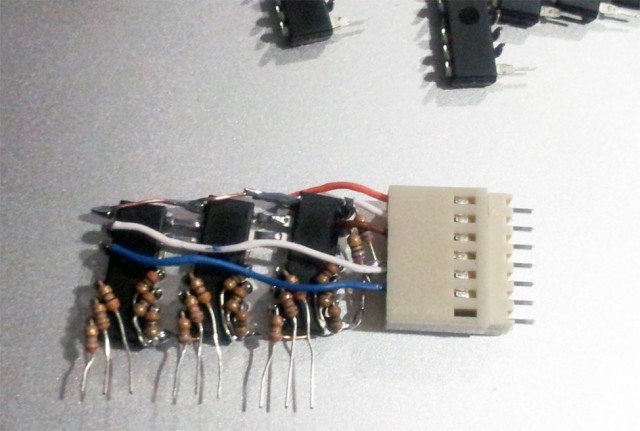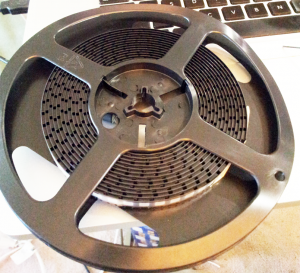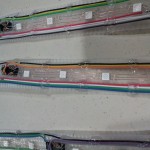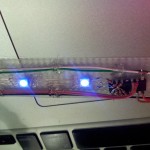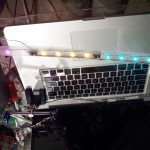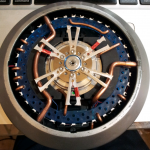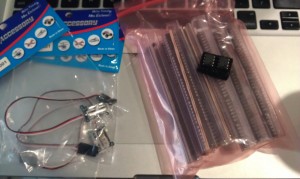Perhaps you’re curious why there haven’t been updates for a little while? To make a long story short, our second jellyfish’s circuitry didn’t work. The new radio link allowed us to push color and brightness updates to the lights much faster than the old system did, and the techniques we’d used to construct the first jellyfish simply weren’t able to handle the increased speed. After much panic and confusion, we bought an oscilloscope.
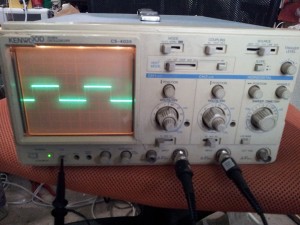
This is an indispensable piece of equipment when you’re dealing with communications interference! With the oscilloscope (and the help of several people far more savvy than us when it comes to RF circuit design), we finally got things working again:
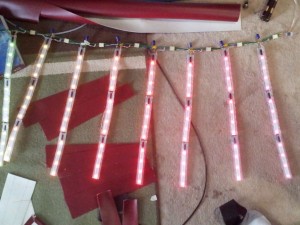
While we were waiting for the oscilloscope to arrive, we’ve mostly finished the gown costume and the skirt/vest costume – and they look great! When we get more of the props integrated, there will be photos.
